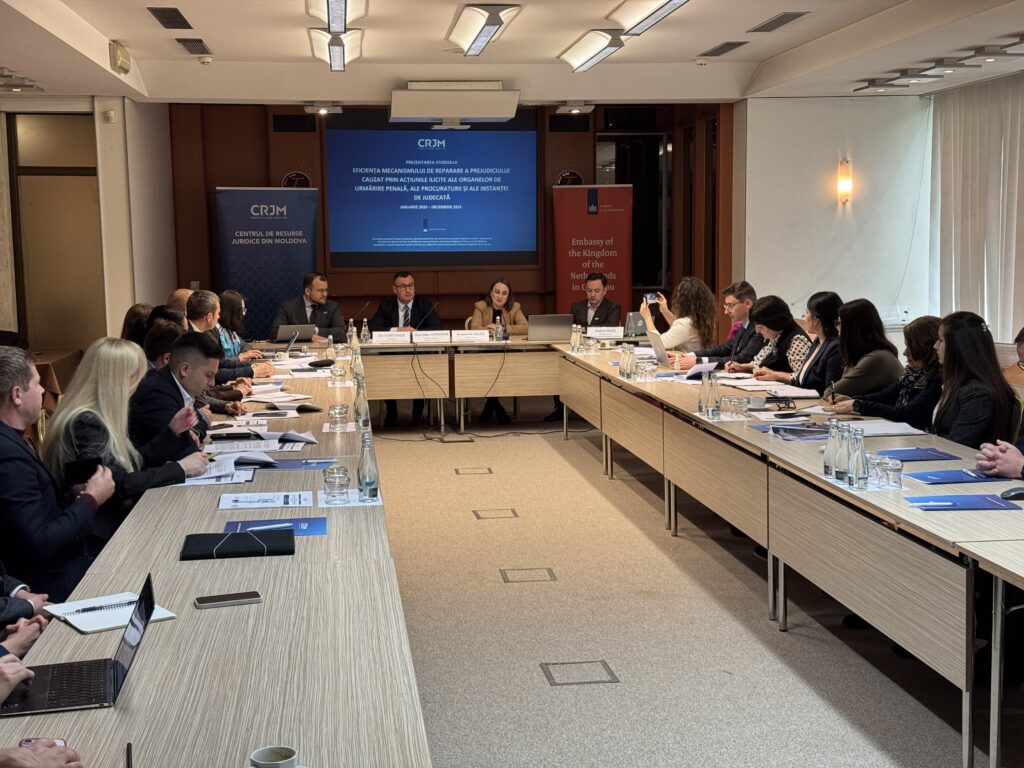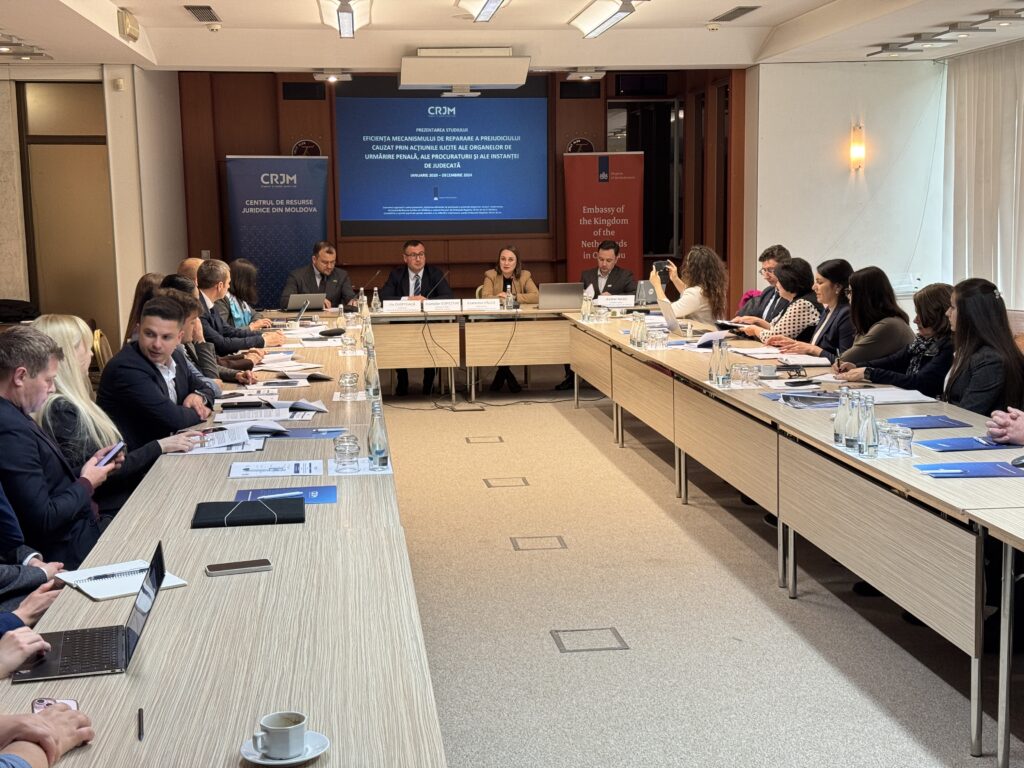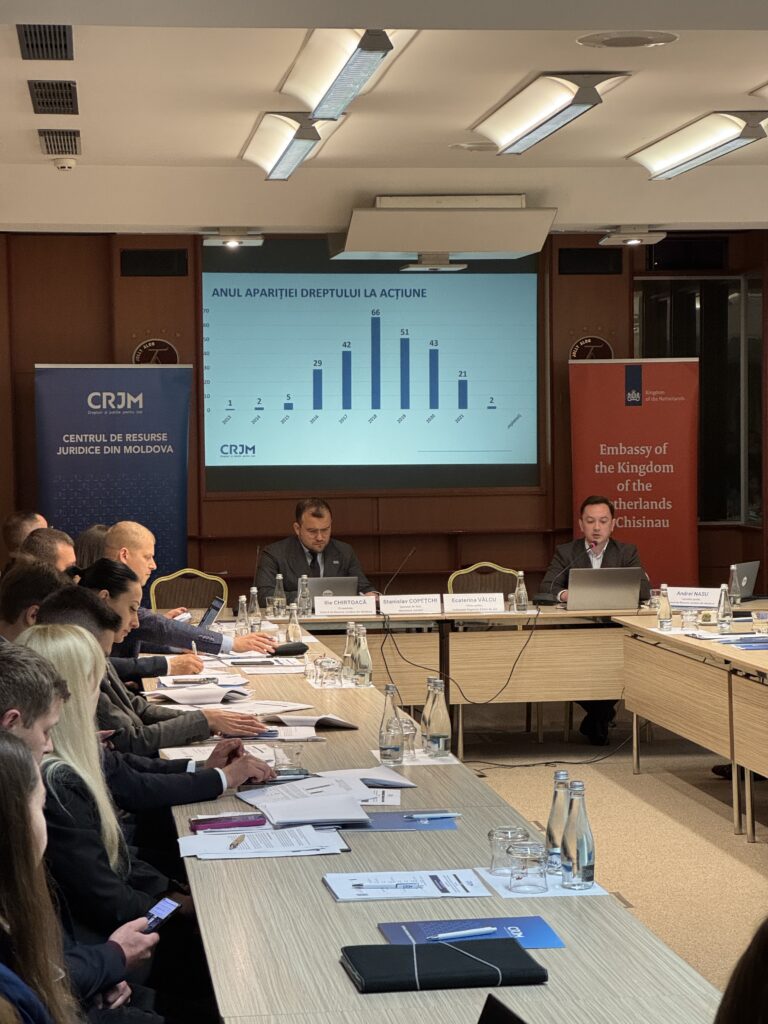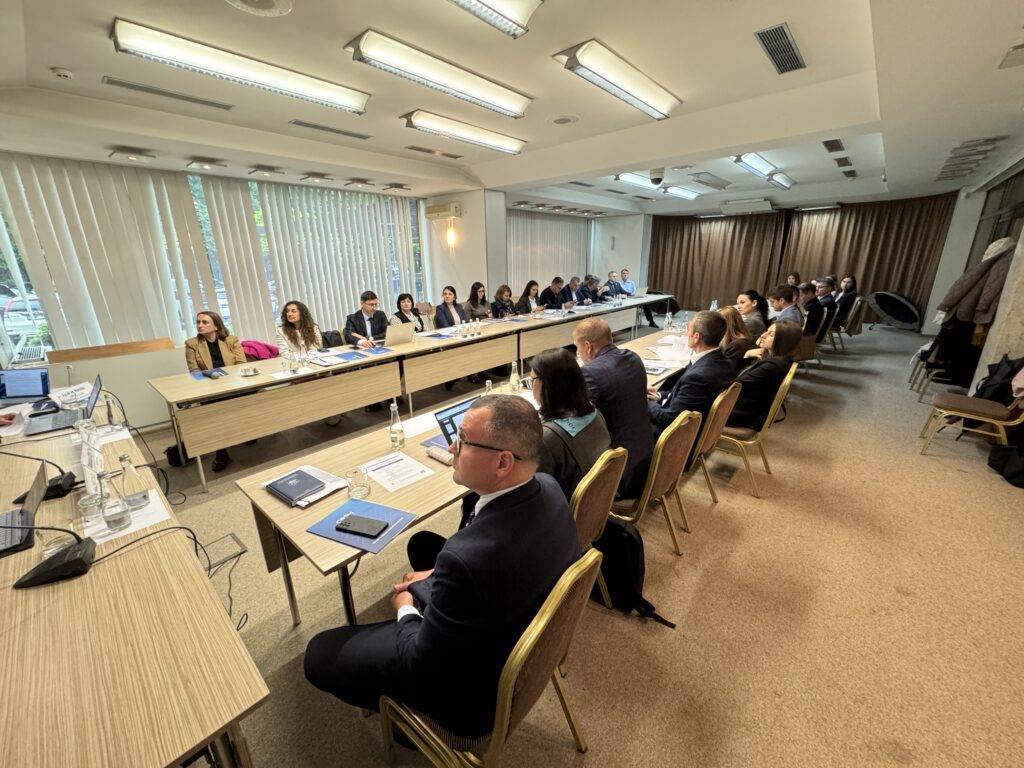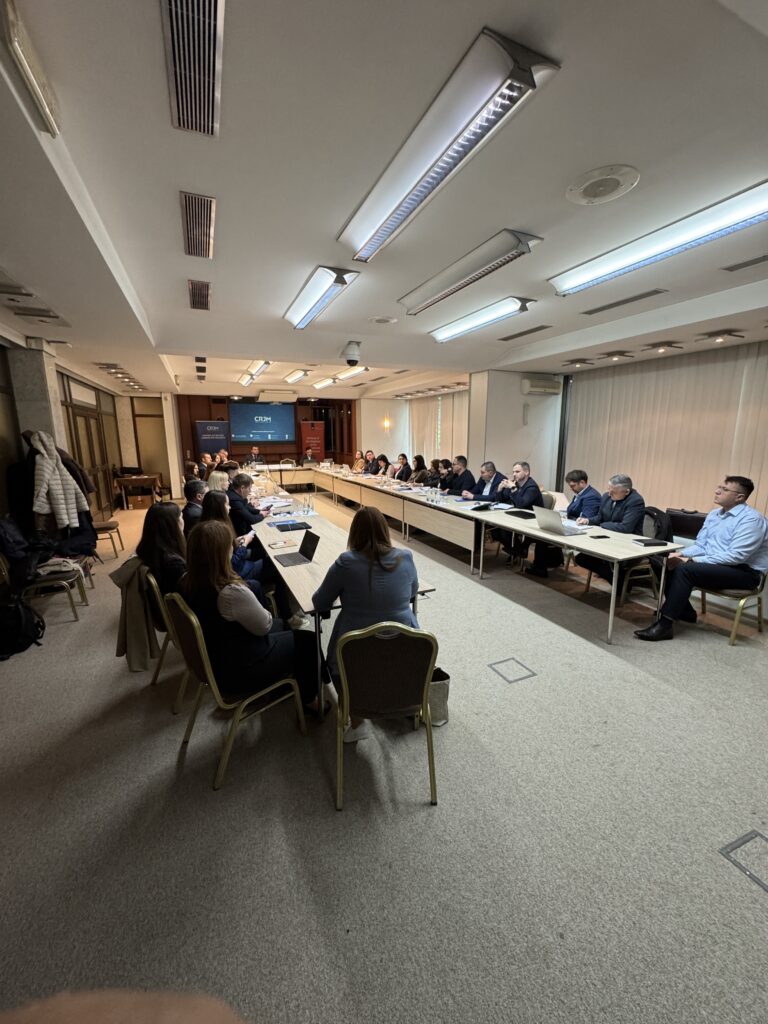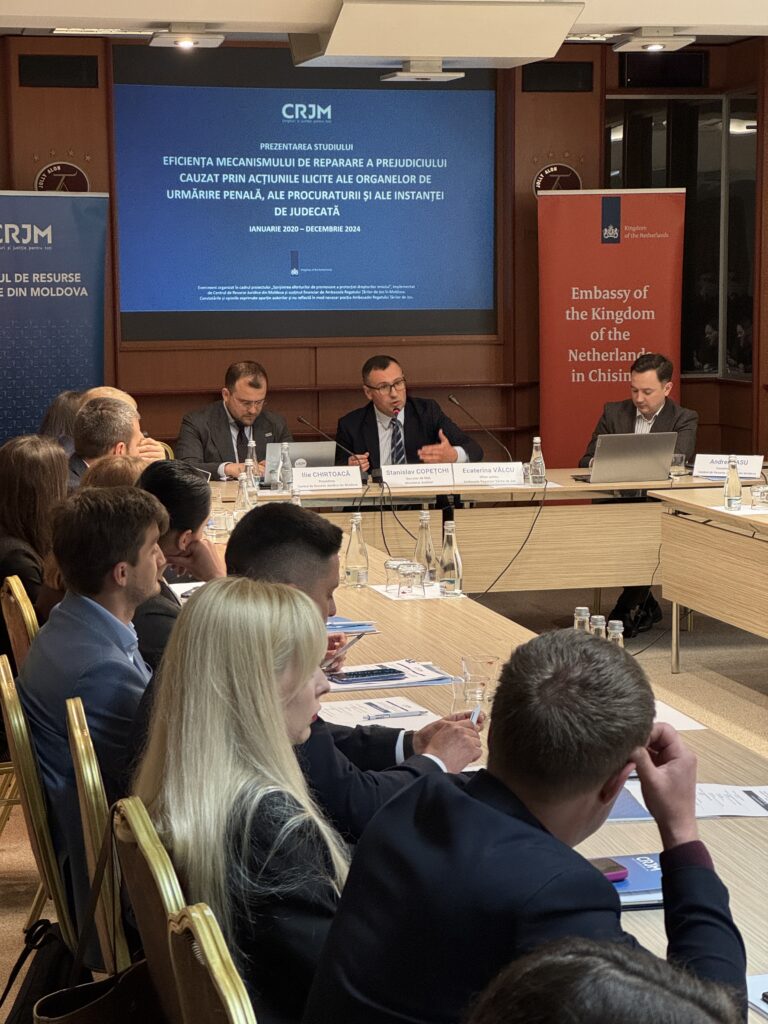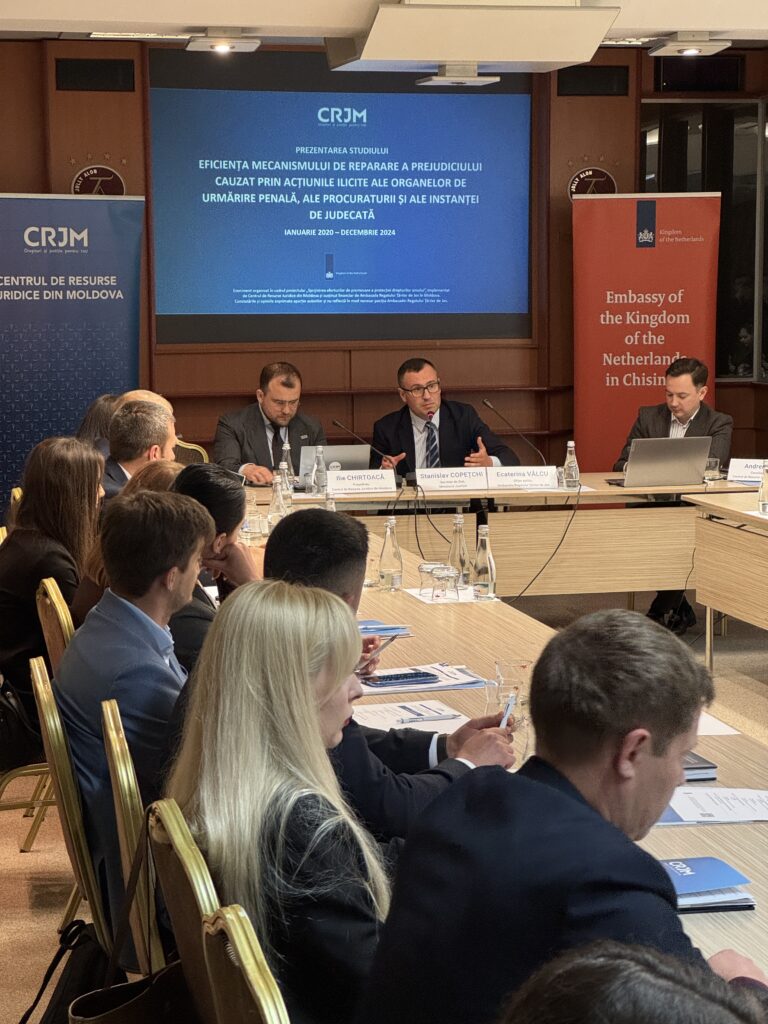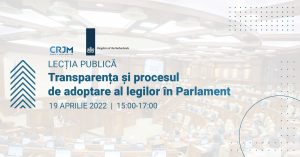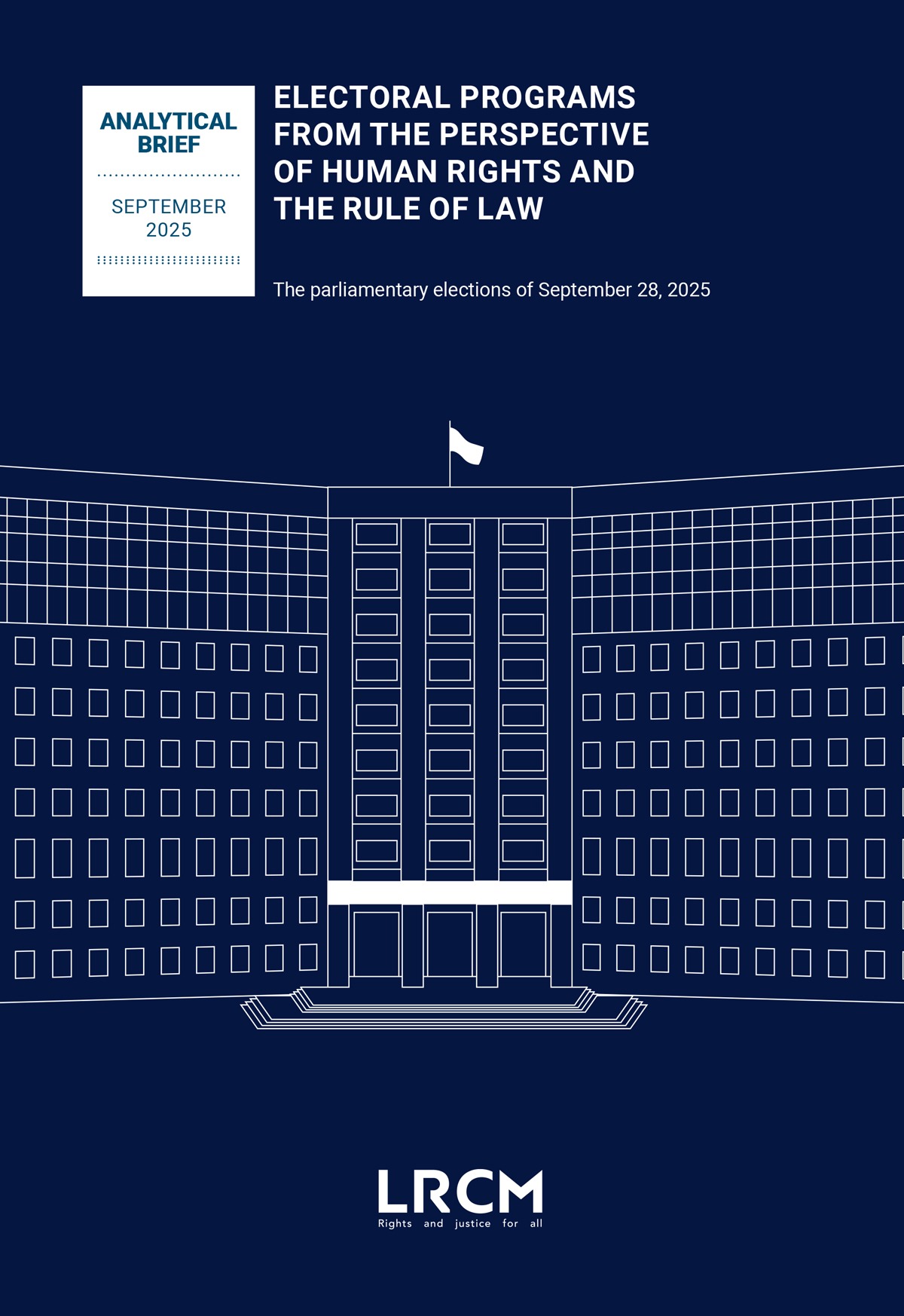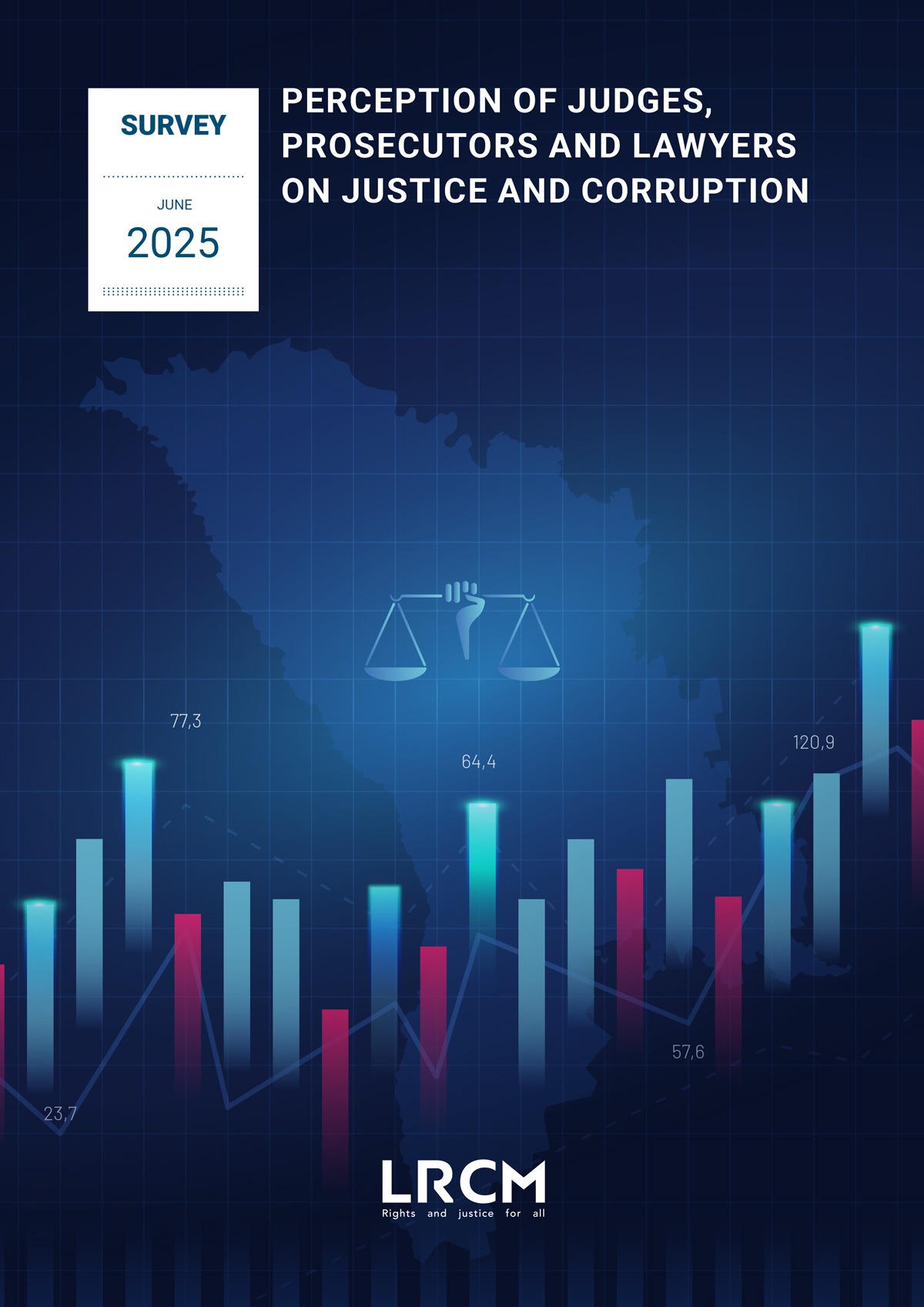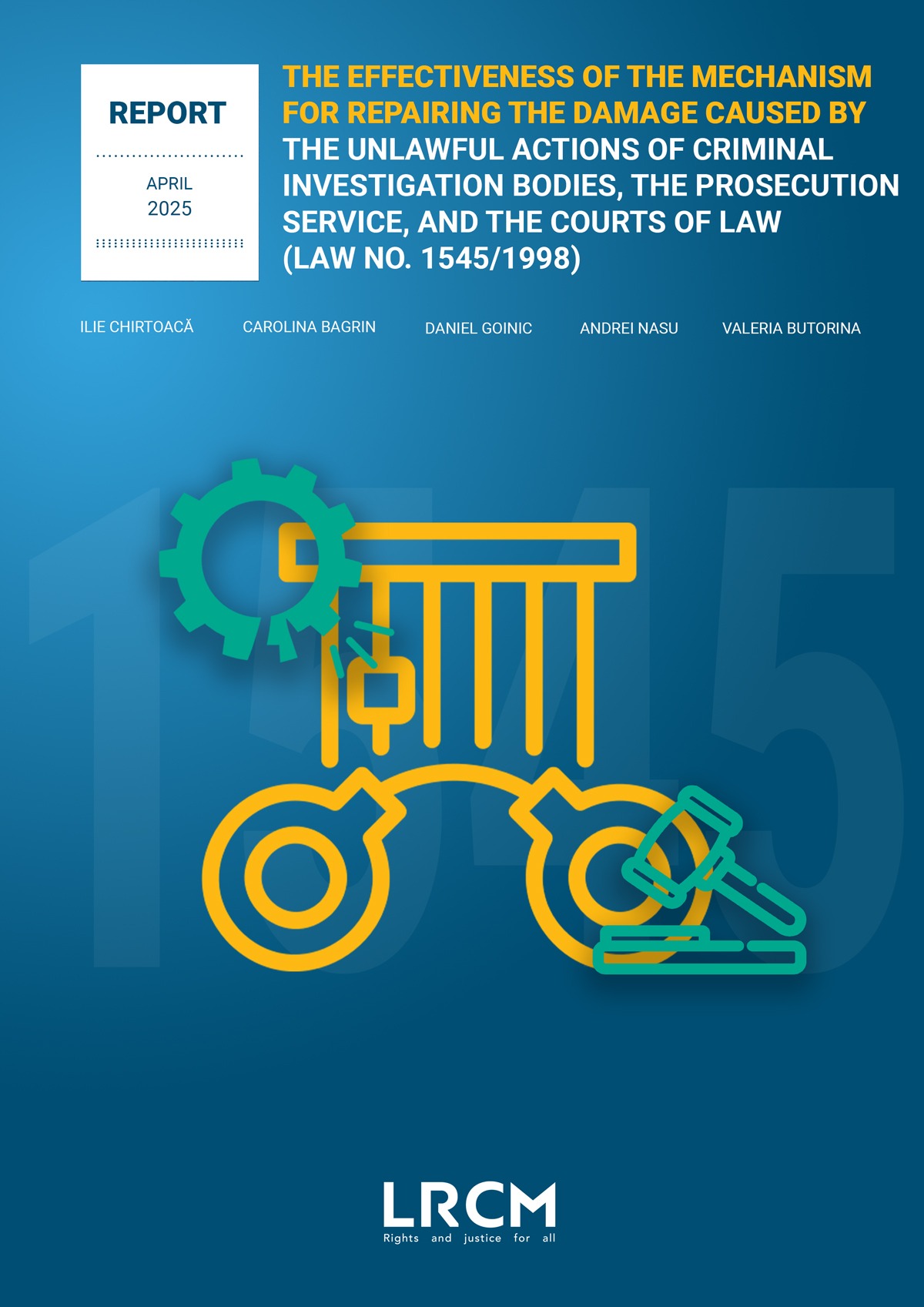Only 1% of material damages and 9% of moral damages claimed are awarded by the courts
Citizens who were illegally detained, arrested, or convicted receive insufficient redress, even after being acquitted or having their charges dropped. Only 1% of the material damages and 9% of the moral damages claimed by applicants are awarded by the courts. Moreover, those most affected by the state’s unlawful actions are ordinary citizens and entrepreneurs.
These are some of the key findings of a study conducted by the Legal Resources Centre from Moldova, which examined the effectiveness of the compensation mechanism established under Law No. 1545 for damages caused by unlawful actions of law enforcement bodies, the prosecution service, and the judiciary.
According to the data, between 2020 and 2024, claimants requested a total of over 112 million lei in moral damages. However, the courts awarded only 9.85 million lei—approximately 9% of the amount requested. On average, a citizen who suffered as a result of the state’s unlawful actions receives moral compensation of MDL 37,452 (around € 1,905).
Material damages claimed are met with even less success in court. Out of the total MDL 294 million requested by claimants, the courts awarded only MDL 4.21 million —just 1% of the amount sought. As a result, a person wronged by the state’s unlawful actions receives, on average, only MDL 16,255 (approximately € 828) in material compensation.
“These figures point either to a consistent overestimation of damages by claimants or to a very strict and restrictive approach taken by the courts when assessing these legitimate claims. Our recommendation is that the law should include clear provisions on the criteria for damage assessment, which are currently lacking in the legislation. That said, it is true that in some cases, claimants request exorbitant amounts of compensation that cannot be sufficiently substantiated,” stated Ilie Chirtoacă, President of the Legal Resources Centre from Moldova and one of the study’s co-authors.
Another identified issue is the lack of consistency in judicial decisions when resolving similar cases. For example, in one case of unlawful detention lasting 129 days, the claimant was awarded MDL 100,000 while in another case involving 100 days of unlawful detention, the compensation granted was only MDL 5,000. Furthermore, the symbolic mechanism providing for “official apologies” is rarely applied—it was identified in only 33 out of the 263 cases analyzed.
Who are the parties involved?
The study shows that the majority of individuals affected by judicial errors are ordinary citizens (not holding public office), who were either prosecuted, detained, or arrested, and later acquitted or had the charges against them dropped. Many of the cases involve claimants who owned or managed businesses and were wrongfully accused of tax evasion, money laundering, influence peddling, or fraud in commercial contracts.
A significant number of cases concern annulled administrative proceedings initiated against drivers.
On the other side, in 70% of the cases, the Prosecutor General’s Office appears as the defendant. Other frequently cited institutions include the Ministry of Internal Affairs and its subdivisions, such as the Police and the National Patrol Inspectorate.
How long does it take to resolve a case?
The average time required for the final resolution of a case concerning compensation for damages caused by the state’s unlawful actions is 2 years and 11 months across all three levels of the court system. This timeframe is generally considered acceptable, including from the perspective of the ECtHR’s case law. However, there are cases that took significantly longer—up to nearly 7 years—to be resolved.
Overall, the compensation mechanism can be considered stable, with only 3% of cases being sent back for retrial. However, the chances of success decrease as cases progress through the judicial hierarchy—while over 70% of claimants’ requests are upheld at first instance, the rate of accepted claims drops to around 40% at the appellate level. Ultimately, the Supreme Court of Justice upholds the decisions of the appellate courts in nearly 9 out of 10 cases.
What are the recommendations?
The authors of the study recommend that the authorities adopt several legislative measures, including the explicit definition of “unlawful acts,” the establishment of assessment grids, and the creation of a clear and objective mechanism for calculating compensation. They also call for the introduction of an extrajudicial procedure for resolving compensation claims when the damage is evident. Additionally, the development of guidelines and reference materials for judges on the application of Law No. 1545 is necessary, as is the inclusion or updating of training modules on state liability and compensation within the curriculum of the National Institute of Justice.
The research is based on an analysis of 263 irrevocably resolved cases between January 2020 and December 2024 by the Supreme Court of Justice, representing 78% of all such cases. The report provides a detailed assessment of court decisions, the criteria applied, and the amounts of compensation awarded, and it offers recommendations for improving the legal framework. The study also includes a publicly accessible database containing all the analyzed judgments.





